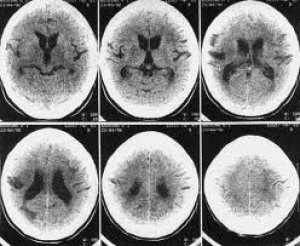
All iLive content is medically reviewed or fact checked to ensure as much factual accuracy as possible.
We have strict sourcing guidelines and only link to reputable media sites, academic research institutions and, whenever possible, medically peer reviewed studies. Note that the numbers in parentheses ([1], [2], etc.) are clickable links to these studies.
If you feel that any of our content is inaccurate, out-of-date, or otherwise questionable, please select it and press Ctrl + Enter.
A cure for multiple sclerosis may have been found.
Medical expert of the article
Last reviewed: 01.07.2025
 ">
">Every coin has two sides, and there is always some good in every villain. So perhaps it is not surprising that beta-amyloid proteins have managed to become the heroes of the day.
Beta-amyloid, the misfolded protein fragment thought to cause brain cell death in Alzheimer's disease, has been shown to reverse the symptoms of another incurable autoimmune disease, multiple sclerosis (MS). At least in mice.
In multiple sclerosis, immune system cells mistakenly attack the myelin sheath around nerve fibers, which acts as an insulator for electrical signals. The myelin sheath increases the speed at which electrical impulses travel through the nervous system. Without insulation, communication within the nervous system is disrupted, nerve impulses become tangled or even slowed down, which leads to physical and cognitive problems. When Lawrence Steinman of Stanford University (USA) began his research, he was confident that he would be able to show that beta-amyloids significantly increase the damage caused by MS autoantibodies. After all, beta-amyloids are toxic to neurons (it seems) and generally prefer to accumulate where the myelin sheath is damaged.
But life is full of surprises, it easily refutes even the most seemingly sound beliefs. When scientists injected beta-amyloid into the "cavities" of the body of mice, whose immune system was preparing to tear apart all the myelin sheaths, causing complete paralysis, the seemingly inevitable death suddenly retreated, averting the threat of imminent paralysis, and the functions of the nervous system began to recover!
The experiment was repeated several times, but the results did not change. Moreover, careful study showed that beta-amyloid injections reduced the level of circulating immune-signaling molecules involved in the process of inflammation. Thus, the scientists conclude that beta-amyloid may be able to combat multiple sclerosis by dampening the autoimmune reaction, the “black mark” of this disease.
So what next? Have we finally found a cure for multiple sclerosis? It’s not that simple. Although the authors found no evidence that the beta-amyloid injected into mice could accumulate in the animals’ brains, government regulators are likely to be shocked at the idea of using proteins thought to cause Alzheimer’s disease as a treatment. Especially after other research groups have already claimed that beta-amyloid somehow makes its way from the blood into the brain.
Understanding this, scientists have already begun to look for workarounds, to lay down straw. Perhaps it will be possible to avoid the need for beta-amyloids themselves. Thus, it turned out that the amyloid-like protein alpha-crystallin B, present in large quantities in the lens of the eye, has the same effect on multiple sclerosis. Despite all the similarities with beta-amyloid, this protein is apparently harmless. But even now it is too early to rejoice - after all, what works on mice will not necessarily help people. There is a long way ahead. But there is hope!
Now let's think a little about why it was the "hostile" amyloid that turned out to be the remedy that humanity has been hopelessly searching for for a very long time. Firstly, it can be assumed that amyloid relieves "erroneous" inflammation around nerve fibers, which pushes the immune system to active actions (for example, it can simply irreversibly block immune signaling molecules that cause inflammation). Remember, scientists mentioned that amyloid itself likes to concentrate in places where the immune system attacks (inflames) the nervous tissue? Maybe this is not without reason? Maybe this is its purpose?
Secondly, recently information appeared that one of the factors in the development of Alzheimer's disease is an autoimmune mechanism that causes thickening of the blood vessels of the brain and, as a result, accumulation of amyloids in them. However, it remains unclear why abnormal amyloids appeared at all. Now, looking at the results obtained at Stanford, one would like to assume that both of these pieces of news are connected and the formation of "incorrect" amyloids may not be a symptom of the disease, but an attempt by the body to restore order in the household, protecting itself from the enraged immune system. In fact, no one knows exactly how dangerous amyloid plaques are, they are simply always present in people suffering from Alzheimer's disease, but this does not mean that they are the cause of the disease. It may well turn out (and now, it seems to us, there is every reason for such reasoning) that these plaques are the consequences of the body's fight against something like autoantibodies that destroy the brain. This even sounds more logical...
Read also: |

